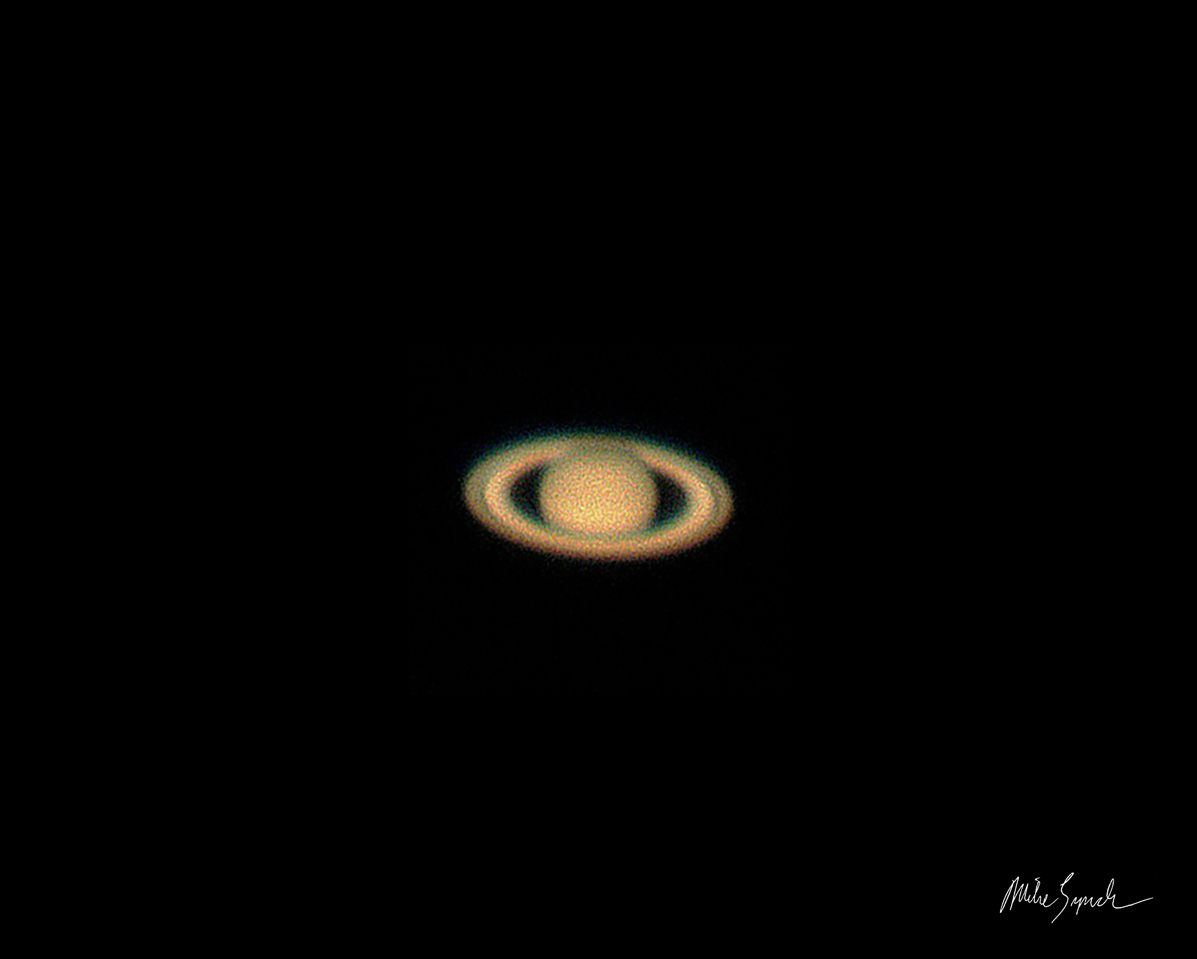
Skywatch: Saturn is edgy
I’ve had a love affair with Saturn ever since I first saw it through my first telescope almost 60 years ago. Even though the image was tiny, I could see the ring system around the great planet. All these years later, when I put on my star parties, it’s hands down my favorite telescope target. I never get tired of hearing the oohs and aahs!
Saturn is at its best for 2024 this month, visible nearly all night over Shamokin. Tonight, Sept. 22, it’s about 808 million miles from Earth, which is considered close for Saturn. Earlier this month, on Sept. 7, Saturn reached what astronomers call opposition. That happens when the Earth and Saturn are on the same side of the sun as they orbit our home star. In opposition, the Earth lies along a line between the Sun and Saturn, putting Earth and Saturn at their minimum distance from each other.
Another nice benefit of Saturn around opposition time is that just like a full moon, it’s out all night long, rising in the east around sunset and setting around sunrise. Opposition between Earth and Saturn occurs about every 12½ months. As Earth takes one calendar year to orbit the sun, Saturn takes 29 years to complete its solar circuit. So, after one year, when Earth returns to the same position in its solar orbit, Saturn only progresses 1/29th of its orbit around the sun, so it takes Saturn about another half month to “catch up” with the Earth and again be lined up in opposition.
It’s now an excellent time to view Saturn with a telescope, even a smaller scope. Beg, borrow, but don’t steal a telescope to catch a view. I know you’ll love what you see. Just after evening twilight, you should easily spot Saturn with the naked eye, just a little above the southeastern horizon. It’s the brightest star-like object in that part of the sky. If possible, hold off viewing Saturn with a telescope until 9 p.m. or even later. That’ll give Saturn a chance to rise higher in the southeastern sky, making for a much clearer view since its light doesn’t have to penetrate through as much of Earth’s blurring atmosphere as it does when it’s close to the horizon.
There is some bad news about Saturn this year. It’s suffering a cutback of power and beauty. This is due to the angle of Saturn’s very thin ring system with respect to its orbit around the sun. That causes Earth to get varying views of Saturn’s rings. Saturn’s rings are usually spectacular, but the ring system appears nearly on edge every 14 years. While Saturn’s ring system is over 130,000 miles in diameter, more than half the distance between the Earth and our moon, it’s only about 50 feet thick. So when we see them edgewise, we don’t see much at all, just a narrow band. They’re not exactly on edge right now, but that’ll happen early next March when the ring system will nearly disappear.
This isn’t good for Saturn’s public image. Saturn without rings is like America without apple pie. Also, Saturn’s not nearly as bright in the night sky as it usually is right now because the ring system is mainly turned away from us and can’t reflect as much sunlight, reducing Saturn’s overall brightness in our night sky. Have no fear, though, because the angle of Saturn’s rings will open up for us in the next few years, and all will be well.
One good thing about Saturn’s rings being edgewise this year is that Saturn’s many moons are more easily visible. Even with a small telescope, they look like tiny stars swarming Saturn. One of the moons, Enceladus, is shooting out traces of water and is a candidate for possible life in our solar system.
Celestial happenings this week
This coming Tuesday morning, before twilight really gets going, Saturn and the waning full moon will be less than a degree apart in the western sky. You should easily be able to see the moon and Saturn in the same field of view with binoculars or a small telescope! In the western half of the U.S. and Canada, as well as Northern Mexico, the moon will actually cross in front of Saturn, something astronomers call an occultation.
Mike Lynch is an amateur astronomer and retired broadcast meteorologist for WCCO Radio in Minneapolis/St. Paul. He is the author of “Stars: a Month by Month Tour of the Constellations,” published by Adventure Publications and available at bookstores and adventurepublications.net. Mike is available for private star parties. You can contact him at mikewlynch@comcast.net.
Starwatch programs
Monday, Sept. 23, 7:30 to 9:30 p.m., River Bend Nature Center in Faribault, Minn. For more information and reservations call Faribault Parks and Recreation at 507-334-2064 or visit www.ci.faribault.mn.us/219/City-Enrichment-Programs
Tuesday, Sept. 24, 7:30 to 9:30 p.m., Gilfillan Estates in Redwood Falls, Minn. For more information call Redwood Falls Library at 507-616-7420 or visit redwoodfallslibrary.org/events/month/2024-09/
Friday, Sept. 27, 7:30 to 9:30 p.m., in Sauk Centre, Minn. For more information and reservations call Great River Library at 1-833-438-4775 or visit griver.org/
Saturday, Sept. 28, 7:30 to 9:30 p.m., Sandburg Learning Center in Golden Valley, Minn. For more information or reservations call 763-504-8028 or visit ced.rdale.org/
Related Articles
Skywatch: Harvest moon shining bright with a power failure
Skywatch: The delightful celestial dolphin
Skywatch: Summer stars hanging in there with Saturn on the rise
Skywatch: Celestial eagle soars high in the sky
Skywatch: Get a stellar start to your day

